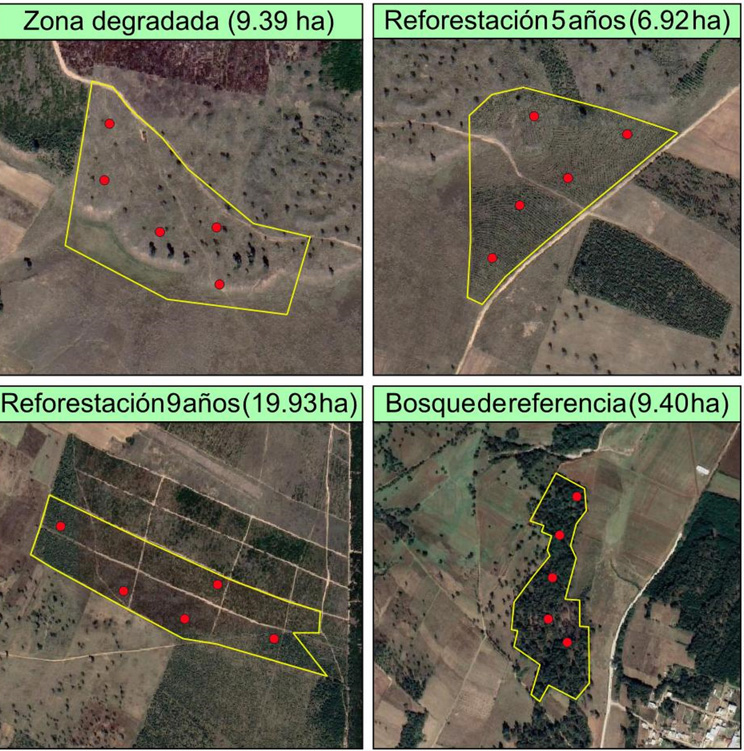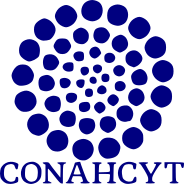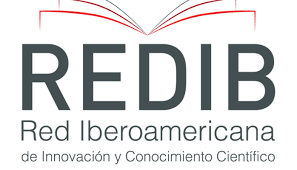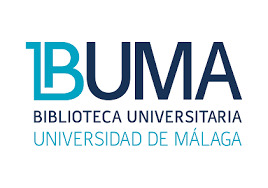Understory diversity; an evaluation attribute in reforestations used as a forest restoration strategy
DOI:
https://doi.org/10.18387/polibotanica.60.8Keywords:
Pinus montezumae, richness, alpha and beta diversity, understoryAbstract
The measurement of the attributes of an ecosystem; structure, species diversity and ecological processes, are useful to determine the efficiency of reforestations used as an ecological restoration strategy. Within these assessments, the diversity and abundance of understory species is an indicator of ecosystem integrity, so a very important goal in any forest restoration process is to increase the presence of these understory components. The objective was to determine the plant diversity of the understory in a degraded zone (ZD), two reforested areas of 5 and 9 years (ZR5, ZR9) and a reference forest (BR). In circular sites, of 100 m2 and 1m2 within each zone, the species present were collected and identified and their abundance was calculated. Total richness, richness index, alpha and beta diversity, and value of importance index (IVI) were estimated. The highest index of alpha richness and diversity was for ZR5 (4.26 and 0.90 respectively). The ZR5 and ZR9 with 64% of shared species. The highest value of the IVI in the BR was represented by Piptochaetium virescens, and by Muhlenbergia macroura in other areas. The study shows that as the structure of reforestation is modified by age; The composition and richness of the understory also changes, with differences between the different study areas, re-establishing the vegetation cover and initiating the recovery of degraded areas.
References
Ares, A., Neill, A. R., & Puettmann, K. J. (2010). Understory abundance, species diversity and functional attribute response to thinning in coniferous stands. Forest Ecology and Management, 260(7), 1104–1113. https://doi.org/10.1016/j.foreco.2010.06.023
Bhutia, Y., Gudasalamani, R., Ganesan, R., & Saha, S. (2019). Assessing forest structure and composition along the altitudinal gradient in the state of Sikkim, Eastern Himalayas, India. Forests, 10(8). https://doi.org/10.3390/f10080633
Cabrera-Luna, J. A., & Gómez-Sánchez, M. (2005). Análisis Florístico de la Cañada, Querétaro, México. Botanical Sciences, 77, 35–50. https://doi.org/10.17129/botsci.1711
Chust, G., Chave, J., Condit, R., Aguilar, S., Lao, S., & Pérez, R. (2006). Determinants and spatial modeling of tree β‐diversity in a tropical forest landscape in Panama. Journal of Vegetation Science, 17(1), 83–92. https://doi.org/10.1111/j.1654-1103.2006.tb02426.x
Claveau, Y., Messier, C., & Comeau, P. G. (2005). Interacting influence of light and size on aboveground biomass distribution in sub-boreal conifer saplings with contrasting shade tolerance. Tree Physiology, 25, 373–384. http://heronpublishing.com
Comisión Nacional para el Conocimiento y Uso de la Biodiversidad (CONABIO). (2023). Flora y Fauna de México. https://www.biodiversidad.gob.mx/
Dodson, E. K., & Peterson, D. W. (2010). Dry coniferous forest restoration and understory plant diversity: The importance of community heterogeneity and the scale of observation. Forest Ecology and Management, 260(10), 1702–1707. https://doi.org/10.1016/j.foreco.2010.08.012
Estades, C. F., Martín, Y., & Escobar, A. H. (2005). Los ecosistemas de las plantaciones de pino de la Cordillera de la Costa. In C. Smith-Ramíres, J. J. Armesto, & C. Valdovinos (Eds.), Historia, Biodiversidad y Ecología de los Bosques Costeros de Chile (Primera, pp. 600–616). Editorial Universitaria.
Fremout, T., Thomas, E., Taedoumg, H., Briers, S., Gutiérrez-Miranda, C. E., Alcázar-Caicedo, C., Lindau, A., Mounmemi Kpoumie, H., Vinceti, B., Kettle, C., Ekué, M., Atkinson, R., Jalonen, R., Gaisberger, H., Elliott, S., Brechbühler, E., Ceccarelli, V., Krishnan, S., Vacik, H., … Muys, B. (2022). Diversity for Restoration (D4R): Guiding the selection of tree species and seed sources for climate-resilient restoration of tropical forest landscapes. Journal of Applied Ecology, 59(3), 664–679. https://doi.org/10.1111/1365-2664.14079
Gadow, K. v., Zhang, C. Y., Wehenkel, C., Pommerening, A., Corral-Rivas, J., Korol, M., Myklush, S., Hui, G. Y., Kiviste, A., & Zhao, X. H. (2012). Forest Structure and Diversity (pp. 29–83). https://doi.org/10.1007/978-94-007-2202-6_2
Gann, G. D., Mcdonald, T., Walder, B., Aronson, J., Nelson, C. R., Jonson, J., Hallett, J. G., Eisenberg, C., Guariguata, M. R., Liu, J., Hua, F., Echeverría, C., Gonzales, E., Shaw, N., Decleer, K., & Dixon, K. W. (2016). Principios y Estándares Internacionales para la Práctica de la Restauración Ecológica. www.SER.org
García-Montiel, C. D. (2002). El legado de la Actividad Humana en los Bosques Neotropicales Contemporáneos. In M. R. Guariguata & G. H. Kattan (Eds.), Ecología y Conservación de Bosques Neotropicales (Primera, pp. 95–115). Libro Universitario Regional.
García, E. (2004). Modificación al Sistema de Clasificicación Climática de Koppen (Quinta). Universidad Autónoma de México, Instituto de Geografía. http://www.publicaciones.igg.unam.mx/index.php/ig/catalog/view/83/82/251-1
Gillam, F. S. (2007). The Ecological Significance of the Herbaceous Layer in Temperate Forest Ecosystems. BioScience, 57(10), 846–858. https://academic.oup.com/bioscience/article/57/10/845/232416
Gotelli, N. J. (2008). A Primer of Ecology (4th ed.). Sinauer Associated.
Granados-Victorino, R. L., Granados-Sánchez, D., & Sánchez-González, A. (2015). Caracterización y ordenación de los bosques de pino piñonero (Pinus cembroides subsp. orizabensis) de la Cuenca Oriental (Puebla, Tlaxcala y Veracruz). Madera y Bosques, 21(2), 23–42.
INEGI. (2021). Anuario estadístico y geográfico por entidad federativa 2020.
Koleff, P. (2005). Conceptos y medidas de la Diversidad Beta. In G. Halffter, J. Soberón, P. Koleff, & A. Melic (Eds.), Sobre Diversidad Biológica: El significado de las Diversidades alfa, beta y gamma (Vol. 4, pp. 19–40). m 3 m M o n o g r a f í a s 3ercer Milenio. http://entomologia.rediris.es/sea
Luna-Bautista, L., De La Rosa, P. H., Velázquez-Martínez, A., Gómez-Guerrero, A., & Acosta-Mireles, M. (2015). El sotobosque en la composición y diversidad de áreas bajo manejo forestal en Santa Catarina Ixtepeji, Oaxaca. Revista Chapingo, Serie Ciencias Forestales y Del Ambiente, 21(1), 109–121. https://doi.org/10.5154/r.rchscfa.2014.08.037
Magurran, A. (2004). Measuring Biologcial Diversity (First). Blackwell Publishing.
McGlone, C. M., Springer, J. D., & Laughlin, D. C. (2009). Can pine forest restoration promote a diverse and abundant understory and simultaneously resist nonnative invasion? Forest Ecology and Management, 258(12), 2638–2646. https://doi.org/10.1016/j.foreco.2009.09.024
Mejía-Saules, M. T. (1993). Uso de Muhlenbergia macroura (Poaceae: Eragrostideae) en la región de Perote, Veracruz, México. Boletín de La Sociedad Botánicade México, 53, 141–147. https://doi.org/10.17129/botsci.1422
Méndez-Toribio, M., Martínez-Garza, C., Ceccon, E., & Guariguata, M. R. (2018). La restauración de ecosistemas terrestres en México Estado Actual, Necesidades y Oportunidades (First). Center for International Forestry Research (CIFOR). https://doi.org/10.17528/cifor/006853
Messier, C., Doucet, R., Ruel, J.-C., Claveau, Y., Kelly, C., & Lechowicz, M. J. (1999). Functional ecology of advance regeneration in relation to light in boreal forests. Canadian Journal of Forestry Research, 29, 812–823.
Morales-Salazar, M., Vílchez-Alvarado, B., Chazdon, R. L., Ortega-Gutiérrez, M., Ortiz-Malavassi, E., & Guevara-Bonilla, M. (2012). Diversidad y estructura horizontal en los bosques tropicales del Corredor Biológico de Osa, Costa Rica. Revista Forestal Mesoamericana Kurú, 9(23), 19–28.
Moreno, C. E. (2001). Métodos para Medir la Biodiversidad (CYTED, ORCYT-UNESCO, & Sociedad Entomológica Aragonesa (eds.); Primera). M&T-Manuales y Tesis SEA. http://entomologia.rediris.es/sea
Mostacedo, B., & Fredericksen, T. S. (2000). Manual de métodos básicos de muestreo y análisis en ecología vegetal. Proyecto de Manejo Forestal Sostenible (BOLFOR).
Ni, R., Baiketuerhan, Y., Zhang, C., Zhao, X., & Gadow, K. von. (2014). Analysing structural diversity in two temperate forests in northeastern China. Forest Ecology and Management, 316, 139–147. https://doi.org/10.1016/j.foreco.2013.10.012
Pompa-Castillo, E. F., Luna-Cavazos, M., & García-Moya, E. (2021). Structure and composition of associated communities of pine-izo(Pinus pseudostrobus-nolina parviflora) from Puebla, Mexico. Caldasia, 43(1), 65–79. https://doi.org/10.15446/caldasia.v43n1.82394
Quijada, G. E. M., Balderas, J. M. M., Garza, E. J. T., Calderón, Ó. A. A., Rodríguez, E. A., & Yamallel, J. I. Y. (2020). Diversity, structure and floristic composition of temperate forests of southern Nuevo León state. Revista Mexicana de Ciencias Forestales, 11(61). https://doi.org/10.29298/rmcf.v11i61.703
Rendón-Pérez, M. A., Hernández-De la Rosa, P., Velázquez-Martínez, A., Alcántara-Carbajal, J. L., & Reyes-Hernández, V. J. (2021). Composition, diversity, and structure of a managed forest in central mexico. Madera y Bosques, 27(1). https://doi.org/10.21829/myb.2021.2712127
Rodríguez-Laguna, R., Valencia-Manzo, S., Meza-Rangel, J., Capó-Arteaga, M. A., & Reynoso- Pérez, A. (2008). Crecimiento y caracteríasticas de la copa de procedencias de Pinus greggii Engelm. en Galeana, Nuevo León. Revista de Fitotecnia Mexicana, 31(1), 19–26. http://www.redalyc.org/articulo.oa?id=61031103%0ACómo
Ruiz-Jaén, M. C., & Aide, T. M. (2005). Vegetation structure, species diversity, and ecosystem processes as measures of restoration success. Forest Ecology and Management, 218(1–3), 159–173. https://doi.org/10.1016/j.foreco.2005.07.008
Ventura-Ríos, A., Plascencia-Escalante, F. O., Hernández De La Rosa, P., Ángeles-Pérez, G., & Aldrete, A. (2017). ¿es la reforestación una estrategia para la rehabilitación de bosques de pino? Una experiencia en el centro de México. Bosque, 38(1), 55–66. https://doi.org/10.4067/S0717-92002017000100007
Wright, J., Symstad, A., & Bullock, James M., Engelhardt, Katharina, Jackson, Louise, Bernhardt, E. (2009). No Title. In S. Naeem, D. E. Bunker, A. Hector, M. Loreau, & C. Perrings (Eds.), Biodiversity, Ecosystem Functioning, and Human Wellbeing. An Ecological Perspective (First, pp. 167–177). Oxford Biology.

Downloads
Published
License
Copyright (c) 2025 POLIBOTANICA

This work is licensed under a Creative Commons Attribution-NonCommercial-ShareAlike 4.0 International License.

Polibotánica by Departamento de Botánica de la Escuela Nacional de Ciencias Biológicas del Instituto Politécnico Nacional se distribuye bajo una Licencia Creative Commons Atribución-NoComercial-CompartirIgual 4.0 Internacional.



















